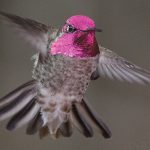The rise and rescue of Echo Farm’s historic farmhouse
By Isabel Zermani • Photographs by Rick Ricozzi
When Jack McCarley was born in 1929, his mother Lina stayed two weeks in the James Walker Memorial Hospital. When she recovered, Lina, her husband John D. “Jack” McCarley and their newborn son drove four miles south to the family home just outside the city limits. “We were the first car to drive down Carolina Beach Road after it’d been paved,” says Jack, who would spend most of his young life on Echo Dairy Farms, leaving only to return with his newlywed bride, Alice. That first homecoming, on a blacktop road down a long dirt drive to the house, was one he would repeat on the eve of its 100th year. The original farmhouse, newly restored by Scott Carpenter and his family, has been witness to it all: The rise of a family farm expanding to over 1,000 acres; the failure of the dairy business; and the transformation into a golf course community of 1,000 families. Now, Wilmington’s rapid development may alter the landscape yet again.
Jack’s grandfather, Alexander Oldham McEachern, began the dairy in 1908. He was described by the trade weekly Hoard’s Dairy in 1913 as “a strong-chinned, blue-eyed Scotchman” who handles his cows “like a wise husbandman, with intelligence and genuine affection.” At that time, the 500-acre farm boasted 60 Holstein and Jersey cows, 22 heifers, two bulls, and a barn full of calves. Over time, he would more than double his farm size and triple his livestock. His son John D., then Jack, would run the family business. Many locals remember touring the farm on school trips, getting a chocolate milk and a cow figurine as a keepsake.
Originally called Shadeland Dairy, A.O. renamed the vast woodlands “Echo Dairy Farm” because “late in the afternoon when it was still — no tractors, just horse and buggy — you’d hear ‘Gee haw! Gee haw!’ echoing,” Jack recalls his grandfather’s tale. A tall man at 6-foot-1, his granddaddy loved Coca-Cola, his beach shack on Carolina Beach, and “didn’t tolerate whisky.”
By any account, A.O. was a hard-working dairyman who kept extensive records of milk production and cattle genealogy, working alongside professors at NC State to track and breed. It’s said that every cow was named and had more complete family trees than most Wilmingtonians. His most prized cow, Regina, produced milk in record amounts and became a household name.
In 1917, A.O. had the five-bedroom brick farmhouse built by a local carpenter for his wife Minnie and his three daughters. Each of the 44 windows was built slightly different from the others, Jack recalls, something Scott would discover when he had them replaced. The attic window that once oversaw the alfalfa fields still offers a peaceful lookout spot. Small differentiations in the grass reveal where the original driveway was. Now the house is approached from the back. Jack remembers boyhood hours spent gazing out from this spot and still it holds a special power.
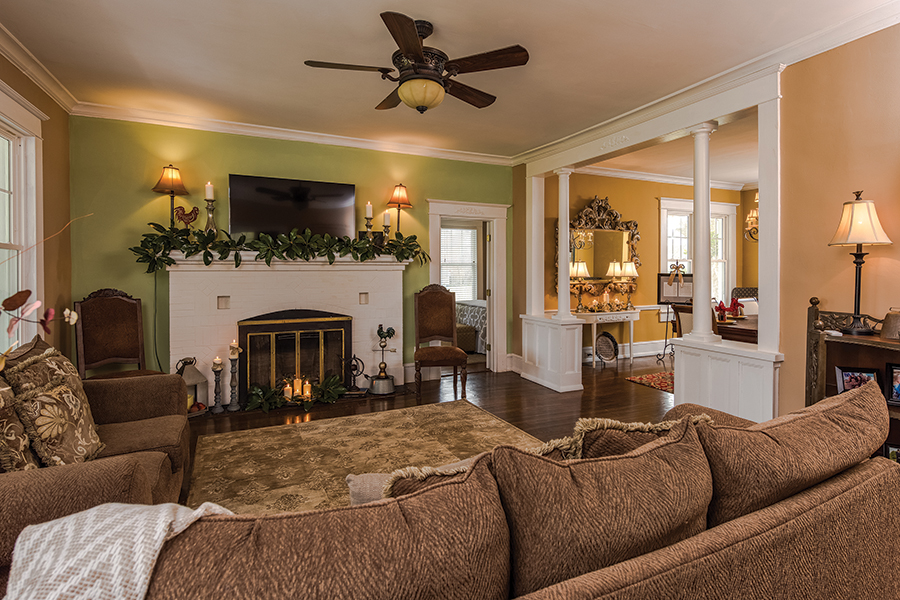
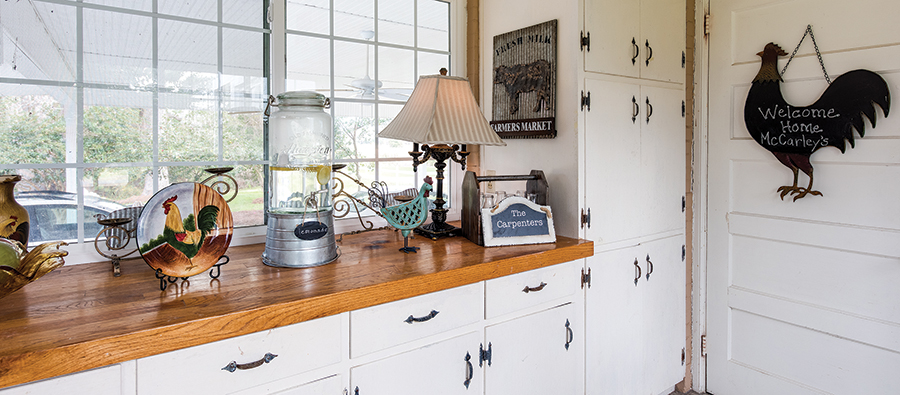
At one point you might have seen the log cabin Jack’s parents built or, later, the house Jack and Alice built and raised their boys in. You’d have seen fields where Jack, at age 10, learned to drive a tractor, or woods where his sons roamed — “they always brought a dog,” assures Alice — or Barnard’s Creek where Jack kept his fishing boat. And you’d have seen farmhands. Echo Dairy Farms employed upwards of 50 people to tend crops, milk cows, and run bottle delivery. Jack remembers workers from Brunswick Town paddling homemade boats across the Cape Fear River and walking through the forest each day to work. “I can’t accurately describe how poor people were in those days,” says Jack.
They say the heart of a house is the kitchen, but in McEachern’s day, it was the dining room. Jack says salesmen from all over would conveniently try to visit the farm around lunchtime. Beck, the cook, lived on the property and Minnie, A.O’s wife, supervised lunch for up to 14 salesmen around the table. The original floors are in good condition and the old wooden columns — irresistible, Jack remembers, for a boy’s climbing — frame the entry from dining to living room.
Just off the kitchen is the basement where one chilly evening A.O. let his brother W. H. McEachern keep his monkeys. Not the famed monkeys of the nearby junction, these came over on banana boats and lived in W.H.’s downtown produce warehouse. A.O. forgot to tell Beck, who went into the basement the next morning and, according to Jack, “jumped out of her shoes!”
Glass doors divide the living room from what is now the front hall, what Jack calls “the music room.” His mother kept a pump organ in the room and, after much dismay, convinced her husband to have it repainted her color of choice: pink. “My mother was a catbird,” remembers Jack. To get a good seal Carpenter had to replace the door but refashioned the original front door into a hall tree and bench that holds court in this cozy entryway.
The former screened porch has been rebuilt into a sunroom with cool stone tile and a sunny palate. This is where Scott and his wife Lynn — the first girl he ever kissed — like to relax with a cup of coffee. It’s just off their bedroom, the former office, with a custom, reclaimed wood headboard in a “Restoration Hardware” style Scott wired with reading lights.
Up the staircase are the other bedrooms and what used to be the only bathroom in the house. Each of Scott and Lynn’s children, grown and working on families of their own, chose the color and style of their rooms. Two nautical-themed rooms connect through what was once a closet. One of them, Jack’s childhood room, now belongs to Scott’s grandchild. Spying a framed photo of this grandchild wearing only overalls next to a white calf, Jack laughs, “this could be me.” Scott bought this house to bring his family together. His son, a UNCW grad, lives here full time, while Scott and Lynn come down frequently from their other farmhouse just outside Charlotte in Louis, N.C. You can take the family off the farm, but not the farm out of the family.


Preserving the character and legacy of the house while updating it for longevity helps to explain why the exterior is newly painted white. Repairs to the brick over the years had created a patchwork effect. Scott opted for a special white sealer that “locks on to seal the bricks,” he says. Framing the windows with black shutters updates the look, as does “170 feet of copper flashing” he got from a buddy in Kinston who “refused payment,” Scott tells me with a twinkle of disbelief in his eye. Scott’s restoration story is filled with moments like this, people coming to his aid, supplies discounted or donated, fitting furniture found for a song. “Crazy providential stories,” says Scott. Sometimes a project is unarguably blessed.
Which is exactly how the next-door neighbor William Zwick feels about the Carpenter family moving in. Though a monument to a beloved time, the house had fallen into disrepair. Brush and vines consumed the yard and Scott built a fire pit to patiently burn it off one campfire at a time. An intimidating fixer-upper, Zwick says most people who came to look at the house didn’t even get out of their cars. Once a prominent fixture, it had mercilessly deteriorated into near ruin. The pain of change is something no one knows better than Jack.
As he tells it, by 1972 the property became more valuable than the dairy. The taxes were steep. The city was growing ever closer. They even searched for property in the surrounding counties to relocate, but the dairy industry was facing pressure. “They were starting to say milk isn’t good for you,” says Jack. They decided operating was no longer feasible. Echo Dairy Farms closed. A.O. had passed on some years before, but Jack and his father, who’d also put their life’s work into the dairy, had to watch it close. “It would’ve been nice to see it go on forever,” says Jack.
An auction was held for all the livestock. Jack recalls one man bought eight or 10 cows and couldn’t fit them all on his truck, so they left one to pick up the next day. That night there was only one cow on Echo Dairy Farms. At 3 a.m. a knock came at the door and Jack answered to find a couple. “We hit one of your cows,” they said. After helping the couple with the mangled car, Jack went out to find the distressed cow struggling off with broken legs in search of her herd. He put her to rest.
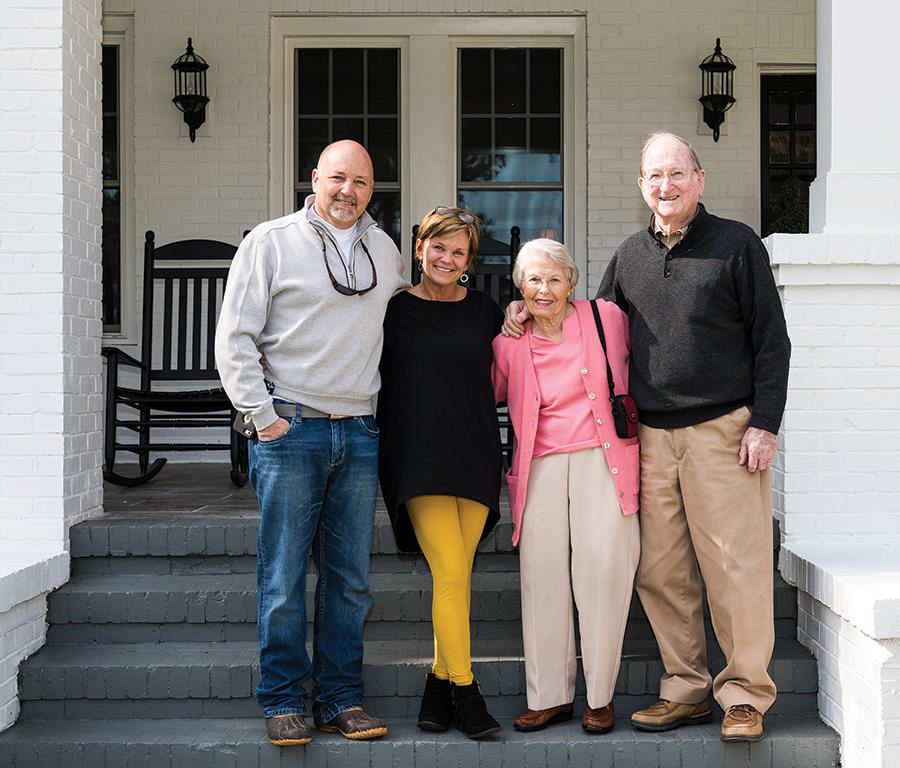
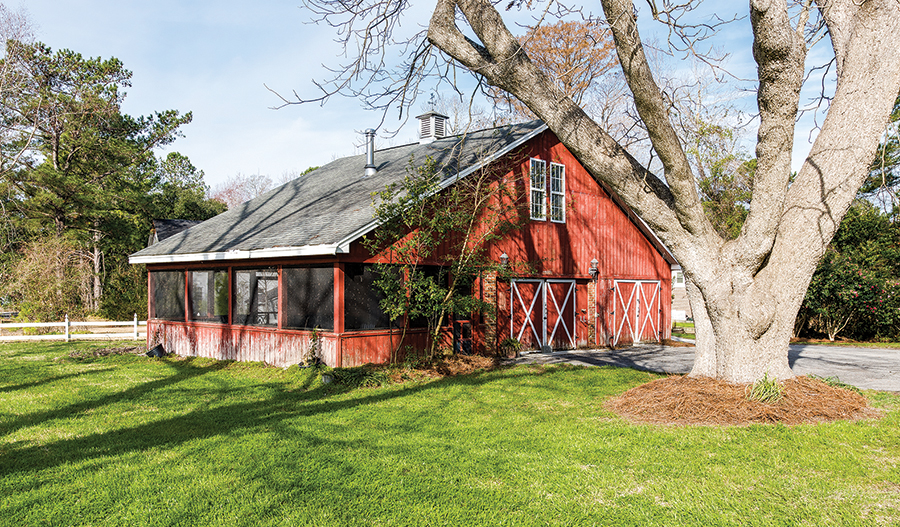
In 1974, Echo Farms Golf and Country Club opened on the 140-acre tract. The original milking barn was converted into a clubhouse, torn down now, and single-family homes were added. The 18th green was built on the farmhouse property on a handshake agreement, one the Carpenters inherited. Now residents of Echo Farms are facing a similar dilemma — the land is more valuable than the golf course.
Matrix Development Corp., the New Jersey corporation that owns and operates the golf course, plans to develop the land for housing. Staunch resident opposition and pending legal challenges are among the hurdles. The Echo Farms Residents Association has taken legal action against Matrix, arguing the proposed development violates restrictive covenants. But Matrix is moving forward. Recently, the technical aspects of their plans for a 216-unit apartment complex, 164 single-family homes and 31 townhomes dubbed “The Woodlands at Echo Farms” were approved by the city’s subdivision review board.
Jack remembers hunting geese on these woodlands.
Many residents at a recent “Save Echo Farms” meeting in the Roland-Grise Auditorium described concerns besides property values: loss of green space, dangerous traffic and school overcrowding. They expressed how blindsided they felt. Like an echo across the decades, they didn’t expect their way of life to change.
Whether or not Echo Farms can be “saved” hangs in the balance, but the farmhouse, at least, is restored. Jack and Alice returned to the house for the first time since the farm sold.
They found the camellia garden Jack’s mother planted revived by the Carpenters. The Stuart pecan trees Jack’s father bought as seedlings on the train now tower over the house. Lynn shows Jack to a tiny footprint in the concrete walkway inscribed 1931, “I’m about to die to ask — is that your footprint?”
“Yes,” says Jack who, tall and bright-eyed like his grandfather, admits to being a bit overwhelmed by the memories.
Scott takes him by the arm and gives him a reassuring pat on the back as they walk toward the door, “You’re home, Jack.”
Isabel Zermani, our senior editor, prefers the storied life.

